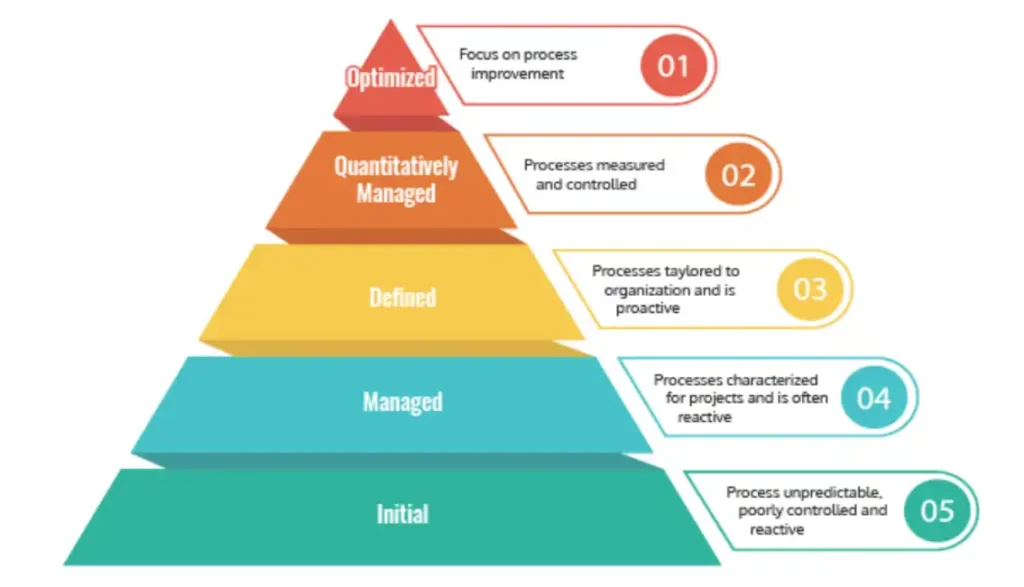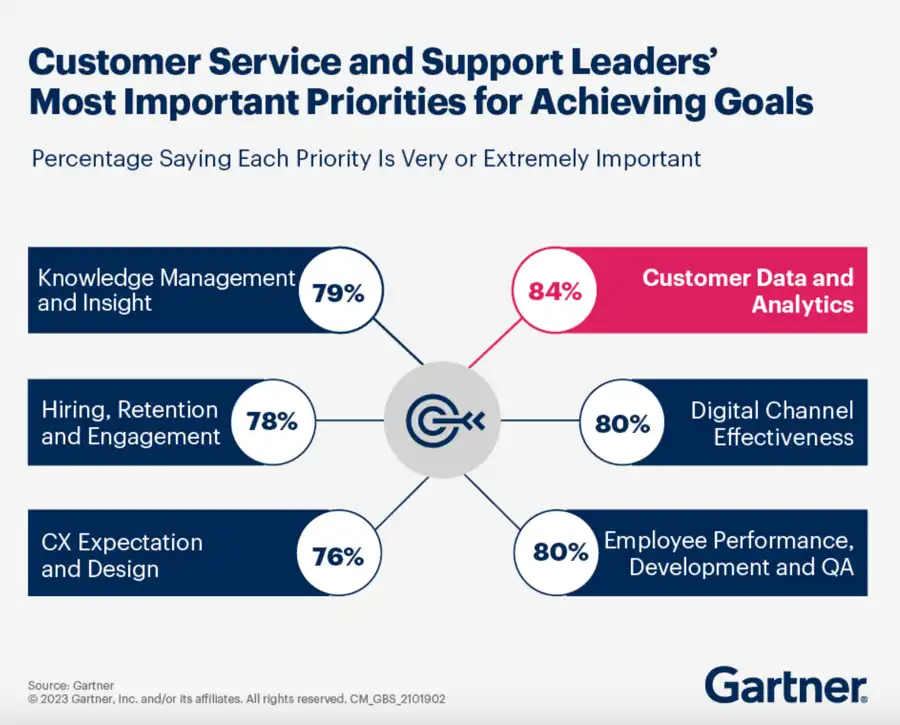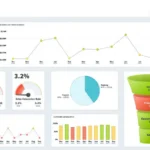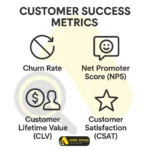How to Build a Customer Success Strategy That Actually Works: A Proven Framework

Did you know it costs five times more to acquire new customers than to retain existing ones?
Companies that prioritize customer success are 60% more profitable than their competitors. A well-executed customer success strategy creates growth opportunities while reducing churn. Customer experience has become the primary competitive factor for two-thirds of all companies, which makes customer success management more vital than ever.
Business priorities reflect this transformation clearly. 92% of companies are maintaining or increasing their investment in customer success despite challenging economic conditions. Many organizations find it hard to build and implement a framework that delivers results.
This piece offers a proven framework to build a customer success strategy that works. You’ll learn everything from assessing your current capabilities to measuring effectiveness. These insights will help reshape your customer success operations.
But before we move further, if you are looking to learn how can you setup a clear and defined customer success process for your business, I can definitely help you. Visit iAdeelSohail 30-minute consultation for individual-specific SEO and Customer Success guidance. I will help you spot opportunities and create strategies that fit your business needs. Contact me now!
Table of Contents
What is Customer Success Management and Why It Matters

Customer success management shows a basic change in how businesses build relationships with customers. Companies no longer just solve problems – they make sure customers get the results they want from products or services. This approach matters more now because businesses know their success depends on their customers’ success.
Defining customer success vs. customer service
People often mix up customer success and customer service, but they serve different purposes in an organization. Customer success builds relationships and plans ahead, while customer service handles immediate issues.
Customer success teams spot challenges early and solve them before they become problems. They build long-term connections between companies and customers to help them get the most value from products and services.
Customer service works differently. These teams step in after problems happen to fix issues and answer customer questions.
Here are the main differences between these approaches:
- Approach: Customer success plans and discusses, while customer service responds to issues.
- Objective: Customer success builds toward long-term business results, while customer service fixes immediate problems.
- Timeline: Customer success creates lasting relationships, while customer service handles quick, specific issues.
- Metrics: Customer success looks at retention rates and customer lifetime value, while customer service measures how fast issues get fixed and how happy customers are.
Both roles work together despite their differences. Chase Clemons from Basecamp’s Customer Support team puts it well: “Customer support is a feature of the product,” while customer success helps customers grow with your product.
The business impact of effective customer success
Good customer success strategies bring clear business benefits. They help keep customers around longer. A Gartner study found that “the average probability that a customer would stay with a company when presented with an opportunity to switch was 82 percent after a value-enhancing service interaction”.
Customer success helps grow revenue by:
- Reduced churn: Solving potential issues before customers leave.
- Lower acquisition costs: Keeping current customers costs less than finding new ones.
- Increased upsell/cross-sell opportunities: Teams find ways to expand existing accounts.
- Enhanced advocacy: Successful customers spread the word – 77% of happy customers tell others about good experiences.
Smart companies now make customer success a key part of their business. Even in tough economic times, 92% of companies surveyed keep investing in or increase their customer success budgets. This shows they understand how customer success relates to business growth.
Evolution of customer success in modern business
Customer success has grown in clear stages in the last two decades. It started in the early 2000s mainly as reactive support that fixed problems as they came up. By the mid-to-late 2000s, businesses started planning ahead. They realized keeping existing customers cost less than finding new ones. This led them to create dedicated customer success teams focused on renewals.
The 2010s saw customer success become more strategic. Teams stopped just trying to keep customers and started helping them reach real goals. They matched their work more closely with what customers wanted to achieve.
Digital transformation has changed customer success. Gainsight notes that while today’s customer experience happens mostly online, teams still need to make it personal and human. Modern teams use digital tools to work better and give each customer individual attention. AI will soon change customer success even more. It helps teams understand customer behavior better and spot needs earlier, while making personal service possible for more customers.
Through all these changes, one thing stays the same: Customer success means helping customers reach their goals with your products or services, which helps everyone grow.
Assessing Your Current Customer Success Capabilities

You need to understand your current capabilities before building a strong customer success strategy. This assessment stage forms the foundations of your future customer success initiatives. A detailed evaluation of your existing touchpoints, customer journey gaps, and performance comparison against industry measures will reveal areas that need improvement.
Evaluating your existing customer touchpoints
Customer touchpoints represent moments when customers interact with your brand directly or indirectly throughout their lifecycle. These interactions shape the customer experience and affect how customers view your product, service, and brand by a lot.
The evaluation of these touchpoints starts with creating a detailed inventory. Research shows that exceptional customer experience comes from high-quality interactions across all touchpoints. Here’s how to start:
Document every customer encounter from awareness to retention phases. Your website, published content, sales presentations, invoices, account management, and referral programs should be part of this documentation. After creating this catalog, you should assess each touchpoint’s purpose and role in the customer experience.
The next step involves identifying who owns each touchpoint. This clarity helps determine which departments or team members handle specific customer interactions. To name just one example, Pre-Sales might handle appointment scheduling, Accounting takes care of invoicing, and Marketing runs the webinars.
The final step rates each touchpoint’s effect on a scale of 1-10, where 10 shows the highest impact on customer experience. This scoring helps identify touchpoints that need immediate attention. For vital touchpoints (scoring 8 or higher), you should assess both operational and customer experience effectiveness.

Identifying gaps in your customer journey
After mapping your touchpoints, you need to identify gaps between your current and desired customer journey state. A customer journey gap analysis looks at several aspects that might prevent you from delivering the best experiences.
The most effective gap analyzes look at five key dimensions:
- Customer perceptions gap – where experiences meet or fail to meet customer expectations
- Decision-makers’ knowledge gap – where leaders’ beliefs about customer experiences might hinder progress
- Employee knowledge gap – where staff lack training or knowledge to deliver expected experiences
- Employee enablement gap – where technology and process barriers prevent employees from delivering excellent service
- Customer communications gap – where promises made through communications aren’t delivered in the actual experience
Looking at both customer-facing issues and internal barriers gives you insight into what stops you from achieving your ideal customer experience. This analysis helps create practical action plans to bridge these gaps.
Benchmarking against industry standards
Comparing your customer success capabilities against industry standards gives valuable context to improve. Keep in mind that “there are no accepted industry standards or benchmarks for Customer Success“. Companies implement customer success programs differently, which leads to this lack of standardization.
Several maturity models can guide your assessment. Gartner’s Customer Success Maturity Model helps leaders assess their capabilities and find a path to their target state. ESG’s Customer Success Maturity Model defines, organizes, and measures capabilities across three categories: Build, Operationalize, and Transform.
Your benchmarking should focus on metrics that matter for customer success. Customer retention rate, customer health score, and net promoter score (NPS) are essential. Net dollar retention (NDR) and average revenue per user (ARPU) provide deeper insights into your program’s effectiveness.
Stage-appropriate benchmarks are vital. Kevin Nakao, Managing Director at REVgtm, gave an explanation: “A company with less than USD 5.00 million in Annual Recurring Revenue (ARR) is still trying to achieve product-market fit, whereas a larger, scaled company has not only achieved this milestone but has started to encounter the law of large numbers”. You should always compare your performance with similar-sized companies in your industry.
This detailed assessment of your current capabilities establishes a clear starting point. It helps build an effective customer success strategy that fits your organization’s specific needs and goals.
Building Your Customer Success Strategy Framework
A well-laid-out customer success framework sets the foundation for all your customer-focused efforts. Your current capabilities assessment will help you build a framework that adds coherence and direction to your customer success initiatives.
Core components of a successful framework
The most profitable customer success framework builds on various stages of your customer’s relationship with your business. Understanding your customer’s experience sits at the heart of every framework that works. This experience includes several key stages: onboarding, adoption, retention, expansion, and advocacy.
Building a complete framework that supports this experience needs several vital components:
- A standardized operating model: This provides common language and data structures that help marketing, sales, and customer success teams work together smoothly
- Clearly defined engagement approaches: Choose whether high-touch (personalized), low-touch (automated), or a hybrid model best serves each customer segment
- Customer health monitoring: Set up systems to track leading indicators of customer satisfaction and potential churn risks
- Consistent processes: Create repeatable workflows for each stage of the customer lifecycle, from implementation to expansion
- Supporting technology: Pick tools that let you collect data, analyze it, and take proactive steps based on customer behavior
Your framework should fit your business type and growing needs. Gainsight points out that the most mature companies use tools to monitor health scores for thousands of customers. They combine digital touchpoints with CSM interventions to guide customers toward their desired outcomes.
Arranging customer success with business objectives
Customer success strategies work best when they directly connect with broader business goals. Customer success goals should link to company objectives like revenue growth, customer retention, and profitability. Customer success initiatives might lose their way without this connection to what drives business forward.
Start by explaining how customer success adds to key business metrics. Studies show teams face challenges when goals and KPIs don’t match up. Many list this as their biggest CS challenge. Clear communication and structured collaboration can solve this issue.
The Customer Success Operating Model (CS-OM) offers a unified approach that makes collaboration easier across departments. This model uses standardized data, which lets marketing, sales, and customer success work with the same information. The whole company commits to customer success under this framework, not just one department.
Better outcomes emerge when daily customer success activities connect with business objectives. Companies can track how specific actions contribute to broader business results using frameworks like Activity Measurement and Performance Measurement (AMPM). This visibility keeps customer success initiatives focused on activities that add real business value.
Creating a customer success mission statement
A strong mission statement guides your customer success program. The Customer Success Association puts it simply: “The Mission of Customer Success is to increase sustainable proven profitability for both the Customers and the Company”. This definition highlights three vital elements: sustainability, proven value, and mutual profitability.
Your mission statement should be clear, concise, and match your company values. A mission statement that works should:
- Define your purpose and audience clearly
- Use simple, available language without technical jargon
- Set specific, measurable goals that address customer expectations
- Include your company’s core values to ensure coherence
- Stay current as customer needs change
A well-built mission statement influences your entire organization. Teams unite around shared objectives and create a consistent approach to customer interactions. Customers get clear expectations about what they can expect from your partnership.
Your mission statement works best when it connects to your framework and business objectives. All elements should work together to deliver exceptional customer outcomes.
Designing Your Customer Success Team Structure

Your customer success strategy needs the right team to make it work. The team’s setup directly affects how well you deliver value to customers and keep them coming back. Your structure should adapt as your business grows and customer needs change.
Key roles and responsibilities
A well-laid-out customer success team has several essential positions. Each role has specific duties that combine to keep customers satisfied and loyal. A clear understanding of these roles helps build a unified team that manages customer relationships well.
The Chief Customer Officer (CCO) stands at the executive level as your organization’s customer advocate. This senior leader’s responsibilities include:
- Finding and fixing gaps in the customer experience
- Giving the executive team a complete customer perspective
- Leading customer-focused initiatives across departments
- Making the customer experience better
The Vice President of Customer Success reports to the CCO and handles strategy execution and growth. This role demands strong leadership and a talent to balance internal and external services. They focus on analysis and planning while working with other department heads.
The Customer Success Director keeps track of customer relationships and spots emerging needs. They manage teams and study customer data to find patterns and specific challenges.
The Customer Success Operations Manager makes processes more efficient and develops ways to improve results. They spot and fix inefficiencies in customer success processes, which creates smoother interactions at every stage of the customer’s trip.
Customer Success Managers (CSMs) act as the main contact for customers. Their duties include:
- Getting new clients started and helping with product setup
- Tracking customer health and usage data
- Reaching out to customers before problems arise
- Taking care of renewals and finding upgrade opportunities
Hiring the right customer success managers
The right CSMs make all the difference to your team’s success. Look for candidates who combine technical knowledge with relationship skills, not just customer service experience.
Industry experts suggest focusing on candidates with “raw talent” and a high “give-a-damn factor” – people who naturally want to win and care deeply about company success. Problem-solvers who work well in unclear situations make great additions to the team.
Most positions ask for a bachelor’s degree in business, marketing, communications, or related fields, though requirements vary by company and industry. These skills matter more than formal education:
- Strong people and communication skills
- Problem-solving and analysis capabilities
- Time management expertise
- Quick learning of complex systems
- Background in customer-facing roles
During interviews, watch for candidates who show empathy, teamwork, and customer-first thinking. Great CSMs understand customer needs naturally and turn them into action plans.
Scaling your team as you grow
Your customer success team must grow with your business. The timing matters – delaying too long can lead to customer losses and brand damage that takes time to fix.
We based our team structure on customer needs rather than just spending levels. Companies segment customers for scaling based on:
- Account company size (64% of organizations use this)
- Account or contract revenue (63% use this)
- Lifecycle state (46% use this)
Keep the right balance of CSMs to customers as you grow. The common idea of “1 CSM per USD 2.00M/ARR” doesn’t work for everyone. Your ratio depends on factors like product complexity and customer needs.
A tiered coverage model works well for scaling. Jen Benson, VP of Customer Success at NewsCred, suggests starting with “platinum-level” customers who spend the most. After your top 20% of customers feel stable, you can use automation and digital tools to handle the other 80% more efficiently.
Advanced technology helps scale customer success teams. Customer success platforms and automation tools let you give customized experiences to more accounts. CSMs can then focus on strategy instead of routine tasks.
Developing Customer Success Methodologies That Work
Remarkable customer success depends on developing methods that anticipate needs rather than just solving problems. Your team should use methods that deliver value throughout the customer lifecycle after assembly.
Proactive vs. reactive approaches
The difference between proactive and reactive customer success is a vital strategic choice that greatly affects outcomes. A reactive approach solves issues after they occur through support tickets, live chat assistance, and complaint responses. Proactive customer success predicts problems and offers solutions before customers face difficulties.
Research shows proactive involvement makes a big difference – 92% of consumers said their perception of a business improved when companies reached out first. This approach creates several competitive advantages:
- Risk mitigation: Problems get identified and fixed before they grow
- Enhanced satisfaction: Regular contact leads to happier customers
- Improved adoption: Product adoption and usage increase naturally
- Increased Customer Lifetime Value: Customer loyalty and long-term advocacy grow stronger
Start with a customer experience map that shows every relationship step to shift from reactive to proactive. Data tracking and sentiment analysis help predict customer needs. Strong internal communication ensures nothing gets missed.
Creating effective customer onboarding processes
The first impression matters most. Onboarding is a vital moment that shapes the entire customer relationship. Good onboarding shows new customers your product or service value from sign-up to successful usage.
Your onboarding process should follow these essential practices:
- Simple and accessible sign-up processes work best
- Personal welcome emails should outline clear next steps
- Hands-on tutorials help users learn naturally
- Different support options match various learning priorities
Great onboarding makes a real difference – companies that personalize this phase see amazing results. To name just one example, PagerDuty saw a 178% increase in mobile app downloads from free trial users after they personalized their onboarding.
Establishing ongoing engagement protocols
Long-term customer success needs systematic approaches to regular involvement. Standard protocols help track and interact with customers throughout their lifecycle.
Effective engagement protocols should include:
- Health scores and early warning systems spot troubled accounts quickly
- Scenario playbooks guide renewal talks and growth opportunities
- Smart automation balances with personal contact for meaningful scaling
- Multiple support channels give customers choices, including self-service options
The best methods blend personal human contact with smart automation. This combination helps your team deliver consistent value as you grow.
Implementing Customer Success Best Practices

Your customer success strategy needs systematic execution through practical tools and processes. A thoughtful monitoring system, scenario-based playbooks, and the right mix of technology and human interaction will help you deliver consistent value to customers.
Setting up health scores and early warning systems
Health scores act as a vital early warning system to predict customer behavior and prevent churn. Simple green-yellow-red systems won’t cut it. You need a more nuanced approach for effective health scoring.
Your business needs specific elements that matter to build an effective customer health score. Here are some metrics to think over:
- Overall product usage and feature adoption depth
- Account growth and expansion patterns
- Support ticket frequency and resolution times
- Customer’s content and community participation
- Survey results and direct feedback
Weight each element based on how well it predicts customer outcomes. To cite an instance, adoption of key features might matter more than general login frequency. You might also need multiple health score models for different customer segments. New customers and long-term users often need different criteria.
Early warning systems work like a “check engine light” for customer relationships. Your team gets automatic alerts when health scores drop below critical thresholds. This enables quick action. The warning system should trigger specific responses based on the issue’s severity and nature.
Creating playbooks for different scenarios
Playbooks turn random customer management into consistent, repeatable processes that get results. These guides outline specific actions and responses for common scenarios. Your team can deliver quality interactions at every touchpoint.
Your CS team needs distinct playbooks for these significant scenarios:
- Partnership kickoff playbooks to gather key information about new customers and line up project plans with their objectives
- Onboarding playbooks to guide customers from implementation through training
- Business review playbooks to structure executive meetings and prepare the right metrics
- Declining health score playbooks to outline intervention steps when customers show risk signals
- Renewal playbooks to manage this vital stage effectively and address concerns quickly
Good playbooks include step-by-step guidance, communication templates, clear ownership assignments, and success metrics. These help customer success teams adapt to changes while keeping interactions consistent.
Balancing automation with personal touch
The perfect balance between automation and human interaction remains a major challenge in customer success. Automation offers scalability and consistency. Human relationships build trust and loyalty.
The best approach uses automation for routine tasks and saves human interaction for high-value touchpoints. Let technology handle regular check-ins, usage monitoring, and basic education. Save your customer success managers for strategy discussions, relationship building, and complex problem-solving.
Set clear boundaries with automation. You might automate initial onboarding emails but have a human conduct the first success planning call. Automated health monitoring can spot at-risk accounts, but personal outreach should address concerns.
Note that automation should boost the human element, not replace it. Customers value authentic human connections, especially during significant moments in their experience, even as AI capabilities advance.
Measuring Customer Success Effectiveness

Measuring success stands as the life-blood of any customer success program that works. Teams cannot determine if their customer success strategy delivers results or creates false progress without proper metrics and data analysis. Analytical insights help teams identify successful approaches, failures, and areas that need attention to maximize results.
Key metrics that actually matter
Customer success metrics don’t all provide equal value. Teams should focus on a strategic few metrics that provide clear insights into program effectiveness, rather than tracking dozens of data points.
Customer health scores offer a detailed way to monitor account status by combining multiple indicators into one measurement. Teams use color codes (green, yellow, red) to quickly spot at-risk accounts and take needed action. The creation of health scores should prioritize metrics that predict customer behavior instead of vanity metrics that look good but lack predictive value.
Other fundamental metrics to prioritize include:
- Net Promoter Score (NPS): Measures customer loyalty by assessing likelihood to recommend your product and gives insights into long-term relationship strength
- Customer Satisfaction Score (CSAT): Shows immediate satisfaction with specific interactions and helps pinpoint areas for service improvement
- Net Revenue Retention: Shows the percentage of revenue retained from existing customers after accounting for churn, contraction, and expansion—ideally exceeding 100% for green practices
- Customer Effort Score (CES): Shows how easily customers accomplish tasks with your product and directly relates to loyalty
Building dashboards for visibility
Smart dashboards turn raw data into useful insights by showing customer success metrics in an available format. The best dashboards provide a comprehensive view and let teams examine specific areas as needed.
Customer success dashboards should start with performance indicators that align with business goals. Data sources like CRM, support platform, and product analytics tools create a unified view. This integration gives all stakeholders consistent information and prevents isolated decision-making.
Successful CS dashboards show paying customers, new customers, upsell opportunities, downgrade accounts, and churn accounts. Maps that display ARR by region help with territory planning and resource distribution.
Using data to predict customer behavior
The rise of customer success from reactive to proactive management comes through predictive analytics. Teams can spot needs and fix issues before they hurt retention by analyzing patterns in customer data.
A unified system should unite data from various touchpoints like financial records, product usage, and customer experience insights. This detailed view helps identify behavioral patterns that come before renewal, expansion, or churn.
Machine learning algorithms boost prediction accuracy by finding complex relationships in your data. These models analyze factors like engagement patterns, support ticket frequency, and feature adoption to create churn confidence scores. Teams can prioritize at-risk accounts and develop targeted intervention strategies to improve outcomes with these insights.
Integrating Customer Success Across Your Organization

Customer success goes beyond departments. Your entire organization needs to work together. The right execution creates a smooth experience that makes customers happy and loyal while helping revenue grow.
Aligning with sales and marketing
Breaking down barriers between customer success, sales, and marketing teams creates a powerful growth engine. Teams need shared goals and consistent communication throughout the customer’s journey.
Your sales-CS alignment will work better with these proven strategies:
- Create joint account plans that include input from both sales and customer success teams to build a complete view of customer needs and goals
- Define clear roles and responsibilities for pre-sale and post-sale activities. Set up structured “swim lanes” so everyone knows who handles renewals, cross-selling, and upselling
- Implement regular communication cadences such as bi-weekly account reviews and cross-functional revenue team meetings to keep everyone accountable
Marketing teams get great insights from customer success teams, especially about content and messages that strike a chord with users. Customer success teams help marketing find advocates for testimonials, case studies, and references by looking at NPS scores, usage data, and other metrics.
Collaborating with product development
Product teams that work together with customer success learn valuable lessons that lead to better decisions and successful product launches. This partnership helps product development line up with actual customer needs instead of assumed ones.
Good CS-product collaboration usually includes regular meetings with clear agendas to discuss:
- Customer feedback on existing features and possible improvements
- Analysis of adoption metrics to spot feature usage patterns
- Product roadmap priorities based on customer value
- Early warning signs about product issues affecting customer health
Many organizations set up dedicated forums where CS teams share top customer product ideas, discuss adoption metrics, and review pain points with product teams. This approach ensures ground customer experiences, not assumptions, guide product decisions.
Creating a company-wide customer success culture
Customer success should be part of your organization’s DNA, not just another department. A true customer-focused culture puts customer outcomes at the center of every business decision.
To encourage this culture:
- Establish a Northstar metric for customer focus that all departments contribute to and measure against
- Provide cross-functional training so employees understand how their work affects customer outcomes
- Recognize and reward teamwork that puts customer success first
As Peter Drucker famously noted, “Culture eats strategy for breakfast.” Your focus on customer satisfaction over sales quotas and long-term customer growth over new business creates an environment where customer success naturally thrives.
Conclusion
Customer success has evolved beyond traditional customer service approaches. This complete guide explores how a working customer success strategy needs careful planning, proper team structure, and dedication from the entire organization.
Achieving success in this field requires more than solving problems as they arise. Informed decision making, active participation, and teamwork across departments are the foundations of any working customer success program. Companies that excel at customer success perform better than their competitors. They achieve higher retention rates and increase their customer lifetime value.
Excellence in customer success begins with understanding your current capabilities. You must then build and implement frameworks that arrange with your business goals. These strategies need regular measurement and adjustment to ensure continuous improvement and optimal results.
Want to reshape your customer success approach? Don’t worry! I am here for you. Book a free 30-minute consultation for individual-specific SEO and Customer Success guidance. I will help you spot opportunities and create strategies that fit your business needs.
Customer success isn’t just another department – it reflects your company’s steadfast dedication to helping customers achieve their goals. These strategies will help your customer relationships grow stronger while your business runs on success.
FAQs
What are the key components of an effective customer success strategy?

An effective customer success strategy typically includes a smooth onboarding process, proactive communication with customers, staff training, and measurement of key performance indicators (KPIs). It also involves creating a standardized operating model, defining clear engagement approaches, implementing customer health monitoring systems, and developing consistent processes for each stage of the customer lifecycle.
How can a company align customer success with its business objectives?

To align customer success with business objectives, companies should connect customer success goals with key metrics like revenue growth, customer retention, and profitability. This involves clear communication and structured collaboration across departments, using models like the Customer Success Operating Model (CS-OM) to standardize data approaches. Additionally, frameworks like Activity Measurement and Performance Measurement (AMPM) can help track how specific actions contribute to broader business results.
What roles are essential in a customer success team structure?

Key roles in a customer success team typically include a Chief Customer Officer (CCO) at the executive level, a Vice President of Customer Success overseeing strategy implementation, a Customer Success Director monitoring customer relations, a Customer Success Operations Manager optimizing workflows, and Customer Success Managers (CSMs) serving as the primary point of contact for customers.
How can companies balance automation with personal touch in customer success?

Companies can balance automation and personal touch by using technology for routine tasks like regular check-ins, usage monitoring, and basic education, while reserving human interaction for high-value touchpoints such as strategy discussions, relationship building, and complex problem-solving. It’s important to establish clear boundaries for automation and ensure that it enhances rather than replaces the human element in customer interactions.
What metrics are most important for measuring customer success effectiveness?

Key metrics for measuring customer success effectiveness include customer health scores, Net Promoter Score (NPS), Customer Satisfaction Score (CSAT), Net Revenue Retention, and Customer Effort Score (CES). These metrics provide insights into customer loyalty, satisfaction with specific interactions, revenue retention from existing customers, and ease of product use. Focusing on these strategic metrics allows teams to identify what’s working and where to focus efforts for maximum impact.






